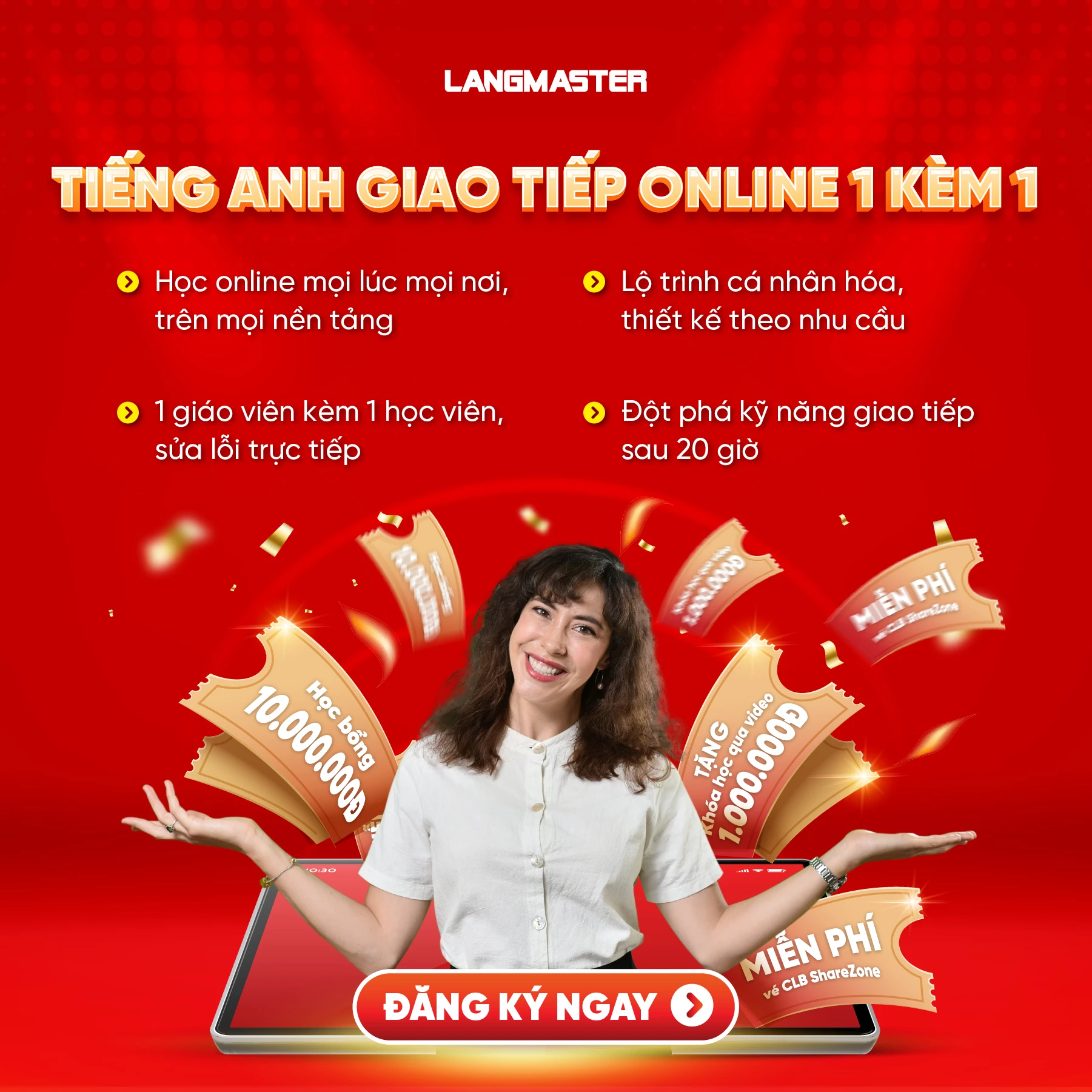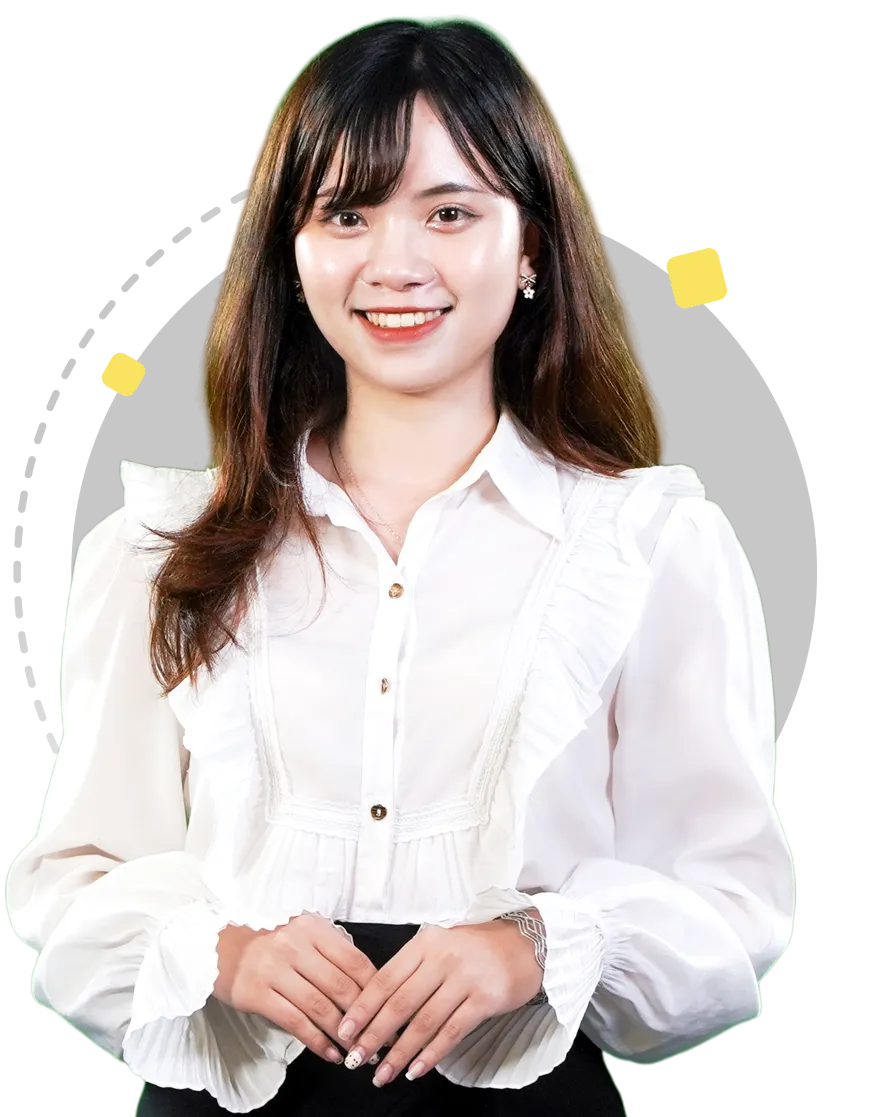Tiếng anh giao tiếp online
Giải đề IELTS Reading Cambridge 15 Test 3 Passage 1: Henry Moore
Mục lục [Ẩn]
Khi ôn tập IELTS Reading, việc luyện kĩ năng giải đề qua các đề thi thật là một cách hiệu quả giúp bạn tăng band điểm nhanh. Bài viết này sẽ giúp bạn giải đề thi thật IELTS Reading Cambridge 15 Test 3 “Henry Moore” với đầy đủ đề bài, câu hỏi, đáp án chi tiết kèm giải thích rõ ràng. Đây sẽ là tài liệu hữu ích để bạn ôn luyện và nâng cao kỹ năng Reading, sẵn sàng chinh phục band điểm mục tiêu trong kỳ thi IELTS.
1. Đề thi thật IELTS Reading “Henry Moore (1898-1986)”
READING PASSAGE I
You should spend about 20 minutes on Questions 1-13, which are based on Reading Passage 1.
Henry Moore (1898-1986)
A. Henry Moore was born in Castleford, a small town near Leeds in the north of England. He was the seventh child of Raymond Moore and his wife Mary Baker. He studied at Castleford Grammar School from 1909 to 1915, where his early interest in art was encouraged by his teacher Alice Gostick. After leaving school, Moore hoped to become a sculptor, but instead he complied with his father’s wish that he train as a schoolteacher (Q1). He had to abandon his training in 1917 when he was sent to France to fight in the First World War.
B. After the war, Moore enrolled at the Leeds School of Art, where he studied for two years. In his first year, he spent most of his time drawing. Although he wanted to study sculpture, no teacher was appointed until his second year (Q2). At the end of that year, he passed the sculpture examination and was awarded a scholarship to the Royal College of Art in London. In September 1921, he moved to London and began three years of advanced study in sculpture.
C. Alongside the instruction he received at the Royal College, Moore visited many of the London museums, particularly the British Museum, which had a wide-ranging collection of ancient sculpture. During these visits, he discovered the power and beauty of ancient Egyptian and African sculpture (Q4). As he became increasingly interested in these “primitive” forms of art, he turned away from European sculptural traditions.
D. After graduating, Moore spent the first six months of 1925 travelling in France. When he visited the Trocadero Museum in Paris, he was impressed by a cast of a Mayan sculpture of the rain spirit (Q5). It was a male reclining figure with its knees drawn up together, and its head at a right angle to its body. Moore became fascinated with this stone sculpture, which he thought had a power and originality that no other stone sculpture possessed (Q6). He himself started carving a variety of subjects in stone, including depictions of reclining women, mother-and-child groups, and masks.
E. Moore’s exceptional talent soon gained recognition, and in 1926 he started work as a sculpture instructor at the Royal College. In 1933, he became a member of a group of young artists called Unit One. The aim of the group was to convince the English public of the merits of the emerging international movement in modern art and architecture (Q7).
F. Around this time, Moore moved away from the human figure to experiment with abstract shapes. In 1931, he held an exhibition at the Leicester Galleries in London. His work was enthusiastically welcomed by fellow sculptors, but the reviews in the press were extremely negative and turned Moore into a notorious figure. There were calls for his resignation from the Royal College (Q8), and the following year, when his contract expired, he left to start a sculpture department at the Chelsea School of Art in London.
G. Throughout the 1930s, Moore did not show any inclination to please the British public. He became interested in the paintings of the Spanish artist Pablo Picasso, whose work inspired him to distort the human body in a radical way. At times, he seemed to abandon the human figure altogether. The pages of his sketchbooks from this period show his ideas for abstract sculptures that bore little resemblance to the human form.
H. In 1940, during the Second World War, Moore stopped teaching at the Chelsea School and moved to a farmhouse about 20 miles north of London. A shortage of materials forced him to focus on drawing (Q9). He did numerous small sketches of Londoners, later turning these ideas into large coloured drawings in his studio. In 1942, he returned to Castleford to make a series of sketches of the miners who worked there (Q10). In 1944, Harlow, a town near London, offered Moore a commission for a sculpture depicting a family (Q11). The resulting work signifies a dramatic change in Moore’s style, away from the experimentation of the 1930s towards a more natural and humanistic subject matter. He did dozens of studies in clay for the sculpture, and these were cast in bronze and issued in editions of seven to nine copies each. In this way, Moore’s work became available to collectors all over the world (Q12). The boost to his income enabled him to take on ambitious projects and start working on the scale he felt his sculpture demanded (Q13).
I. Critics who had begun to think that Moore had become less revolutionary were proven wrong by the appearance, in 1950, of the first of Moore’s series of standing figures in bronze, with their harsh and angular pierced forms and distinct impression of menace. Moore also varied his subject matter in the 1950s with such works as Warrior with Shield and Falling Warrior. These were rare examples of Moore’s use of the male figure and owe something to his visit to Greece in 1951, when he had the opportunity to study ancient works of art.
J. In his final years, Moore created the Henry Moore Foundation to promote art appreciation and to display his work. Moore was the first modern English sculptor to achieve international critical acclaim and he is still regarded as one of the most important sculptors of the 20th century.
Question 1-7
Do the following statements agree with the claims of the writer in Reading Passage 1?
In boxes 1-7 on your answer sheet, write
TRUE if the statement agrees with the information
FALSE if the statement contradicts the information
NOT GIVEN if there is no information on this
- On leaving school, Moore did what his father wanted him to do.
- Moore began studying sculpture in his first term at the Leeds School of Art.
- When Moore started at the Royal College of Art, its reputation for teaching sculpture was excellent.
- Moore became aware of ancient sculpture as a result of visiting London Museums.
- The Trocadero Museum’s Mayan sculpture attracted a lot of public interest.
- Moore thought the Mayan sculpture was similar in certain respects to other stone sculptures.
- The artists who belonged to Unit One wanted to make modern art and architecture more popular.
Question 8-13
Complete the notes below.
Choose ONE WORD ONLY from the passage for each answer.
Write your answers in boxes 8-13 on your answer sheet.
Moore’s career as an artist
1930s
- Moore’s exhibition at the Leicester Galleries is criticised by the press
- Moore is urged to offer his 8………………… and leave the Royal College.
1940s
- Moore turns to drawing because 9…………………. for sculpting are not readily available
- While visiting his hometown, Moore does some drawings of 10………………….
- Moore is employed to produce a sculpture of a 11…………………
- 12………………. start to buy Moore’s work
- Moore’s increased 13…………………. makes it possible for him to do more ambitious sculptures
1950s
- Moore’s series of bronze figures marks a further change in his style
>> Xem thêm:
2. Đáp án đề IELTS Reading “Henry Moore”

|
Question |
Answers |
|
1 |
TRUE |
|
2 |
FALSE |
|
3 |
NOT GIVEN |
|
4 |
TRUE |
|
5 |
NOT GIVEN |
|
6 |
FALSE |
|
7 |
TRUE |
|
8 |
resignation |
|
9 |
materials |
|
10 |
miners |
|
11 |
family |
|
12 |
collectors |
|
13 |
income |
Bảng đáp án đề IELTS Reading “Henry Moore”
Giải thích chi tiết đáp án câu 1-7: TRUE, FALSE, NOT GIVEN
Câu 1: TRUE
Đoạn A. “After leaving school, Moore hoped to become a sculptor, but instead he complied with his father’s wish that he train as a schoolteacher”
Ngay sau khi rời trường, Moore muốn theo đuổi điêu khắc nhưng lại nghe theo ý bố để đi học sư phạm. Nội dung này trùng khớp với mệnh đề trong câu hỏi“làm theo điều cha mong muốn”.
Câu 2: FALSE
Đoạn B: “Although he wanted to study sculpture, no teacher was appointed until his second year.”
Tại Leeds School of Art, năm đầu ông chủ yếu học vẽ; phải sang năm thứ hai mới có giáo viên phụ trách điêu khắc. Vì vậy việc nói ông bắt đầu học điêu khắc “ngay học kỳ/thuở đầu” ở Leeds là không đúng.
Câu 3: NOT GIVEN
Bài chỉ nói ông nhận học bổng vào Royal College và trong thời gian học thì thường xuyên đi bảo tàng. Không có thông tin về “danh tiếng giảng dạy điêu khắc” của trường khi ông mới vào.
Câu 4: TRUE
Đoạn C: “…he discovered the power and beauty of ancient Egyptian and African sculpture. As he became increasingly interested in these ‘primitive’ forms of art…”
Moore thường xuyên đến các bảo tàng ở London, đặc biệt là British Museum, và từ những lần đó ông nhận ra vẻ đẹp, sức mạnh của điêu khắc cổ Ai Cập và châu Phi. Đây chính là nguyên nhân giúp ông biết đến nghệ thuật cổ.
Câu 5: NOT GIVEN
Đoạn D: Bài nói Moore ấn tượng với bản đúc tượng thần mưa của người Maya ở Trocadero. Không nói tượng đó “thu hút sự quan tâm của công chúng”.
Câu 6: FALSE
Moore cho rằng pho tượng Maya đó có sức mạnh và tính độc đáo mà “không tượng đá nào khác có”. Tức là ông thấy nó khác hẳn, không “tương đồng ở vài khía cạnh” như mệnh đề nêu.
Câu 7: TRUE
Nhóm Unit One đặt mục tiêu thuyết phục công chúng Anh về giá trị của trào lưu quốc tế trong nghệ thuật và kiến trúc hiện đại, tức là làm chúng được đón nhận/phổ biến hơn.
Giải thích chi tiết đáp án câu 8-13
Câu 8: resignation
Từ khóa trong câu hỏi là việc Moore bị yêu cầu rời Royal College. Đoạn F cho biết sau triển lãm ở Leicester Galleries, báo chí phản ứng gay gắt và đã có lời kêu gọi về sự “từ chức” của ông tại trường. Như vậy, từ cần điền chính là resignation.
Câu 9: materials
Câu hỏi nhắc đến lý do khiến Moore chuyển sang vẽ. Trong đoạn H, tác giả nói rằng do thiếu nguyên liệu cho điêu khắc, ông buộc phải tập trung vào tranh vẽ. Từ khóa chính là materials.
Câu 10: miners
Ở đoạn H cũng nêu rõ: năm 1942, khi trở lại Castleford, Moore đã thực hiện nhiều bản phác thảo về những người thợ mỏ đang làm việc. Vậy danh từ cần điền là miners.
Câu 11: family
Câu hỏi nói tới một tác phẩm điêu khắc mà Moore được đặt làm. Theo đoạn H, năm 1944, thị trấn Harlow đã mời ông điêu khắc một gia đình. Do đó, từ chính xác để điền vào là family.
Câu 12: collectors
Phần tiếp theo của đoạn H giải thích rằng các bản đúc đồng được sản xuất thành nhiều phiên bản, nhờ đó các nhà sưu tầm trên khắp thế giới có cơ hội mua và sở hữu tác phẩm. Vậy đáp án là collectors.
Câu 13: income
Câu hỏi nói tới điều giúp Moore có thể làm những dự án lớn hơn. Đoạn văn cho biết nhờ việc bán được nhiều tác phẩm, thu nhập của ông tăng lên, cho phép ông thực hiện các công trình quy mô. Vì vậy, đáp án đúng là income.
>> Xem thêm:
3. Từ vựng quan trọng trong bài IELTS Reading “Henry Moore”
Dưới đây là những từ vựng IELTS/ cụm từ bạn nên nhớ khi làm bài IELTS Reading “Henry Moore”:
|
Từ/cụm từ |
Dịch nghĩa |
Ví dụ trong bài |
|
sculptor |
nhà điêu khắc |
“Moore hoped to become a sculptor,...” |
|
scholarship |
học bổng |
“he passed the sculpture examination and was awarded a scholarship to the Royal College of Art in London.” |
|
primitive forms |
hình thức nghệ thuật nguyên thủy |
“As he became increasingly interested in these ‘primitive’ forms of art,...” |
|
reclining figure |
tượng nằm, tượng ngả |
“It was a male reclining figure with its knees drawn up together…” |
|
originality |
tính độc đáo |
“he thought [the Mayan sculpture] had a power and originality…” |
|
exhibition |
triển lãm |
“In 1931, he held an exhibition at the Leicester Galleries in London.” |
|
resignation |
đơn từ chức |
“There were calls for his resignation from the Royal College…” |
|
abstract shapes |
hình dạng trừu tượng |
“Moore moved away from the human figure to experiment with abstract shapes.” |
|
distort |
bóp méo, biến dạng |
“inspired him to distort the human body in a radical way.” |
|
shortage of materials |
sự thiếu hụt nguyên vật liệu |
“A shortage of materials forced him to focus on drawing.” |
|
commission |
đơn đặt hàng (nghệ thuật) |
“Harlow … offered Moore a commission for a sculpture depicting a family.” |
|
collectors |
những nhà sưu tập |
“Moore’s work became available to collectors all over the world.” |
|
income |
thu nhập |
“The boost to his income enabled him to take on ambitious projects…” |
|
critical acclaim |
sự ca ngợi của giới phê bình |
“Moore was the first modern English sculptor to achieve international critical acclaim …” |
|
foundation |
quỹ, tổ chức |
“In his final years, Moore created the Henry Moore Foundation to promote art appreciation …” |
|
notorious figure |
nhân vật khét tiếng (tiếng xấu) |
“…but the reviews in the press were extremely negative and turned Moore into a notorious figure.” |
>> Xem thêm:
4. Nâng cao band điểm IELTS Reading cùng Langmaster
Khi luyện tập với các đề thi mẫu như đề IELTS Reading “Henry Moore”, chắc hẳn bạn sẽ có nhiều câu hỏi cần giải đáp về logic làm bài cũng như cách học từ vựng hiệu quả hơn. Để làm được điều đó, bạn cần một lộ trình học bài bản và giáo viên giàu kinh nghiệm để giúp bạn tiến bộ nhanh trong việc luyện thi IELTS. Đây cũng là lúc bạn nên cân nhắc đến các khóa học IELTS online uy tín để vừa tiết kiệm thời gian của bản thân, vừa đạt hiệu quả tối đa.
Với hơn 16 năm kinh nghiệm giảng dạy tiếng Anh, Langmaster mang đến các khóa học IELTS online được thiết kế phù hợp với từng mục tiêu và năng lực đầu vào của học viên. Chính những ưu điểm nổi bật dưới đây đã giúp khóa học của Langmaster trở thành lựa chọn đáng tin cậy cho những ai muốn chinh phục IELTS một cách bền vững:
- Sĩ số lớp nhỏ (7 - 10 học viên): Giúp mỗi học viên có nhiều cơ hội trao đổi trực tiếp với giảng viên, được chữa bài chi tiết và tiến bộ đồng đều.
- Lộ trình cá nhân hóa: Được xây dựng dựa trên bài đánh giá năng lực đầu vào và có báo cáo tiến độ hàng tháng, đảm bảo việc học tập đúng hướng.
- Giảng viên 7.5+ IELTS: Có chuyên môn cao và cam kết chấm chữa bài cho học viên trong vòng 24h, đồng hành sát sao để học viên sửa lỗi nhanh chóng.
- Thi thử chuẩn thi thật: Giúp làm quen áp lực phòng thi, đồng thời phân tích rõ điểm mạnh - yếu của học viên để cải thiện hơn.
- Cam kết đầu ra: Khóa học cam kết giúp bạn đạt band điểm mục tiêu, hỗ trợ học lại miễn phí nếu khi thi chưa đạt band.
- Học online linh hoạt: Lịch học dễ sắp xếp, có ghi hình lại buổi học và coaching 1-1 để ôn tập chuyên sâu, cải thiện những kỹ năng còn yếu.
- Hệ sinh thái đồng hành: Kho tài liệu phong phú, bài tập trực tuyến và cố vấn học tập theo sát từng bước.
Đặc biệt, bạn còn có thể tham gia lớp học thử miễn phí tại Langmaster. Với hình thức nhóm nhỏ, lớp học thử giúp bạn trực tiếp trải nghiệm phương pháp giảng dạy và đánh giá mức độ phù hợp của khóa học trước khi quyết định đăng ký chính thức với trung tâm.
Trên đây là toàn bộ đáp án đề thi IELTS Reading “Henry Moore” kèm giải thích chi tiết và từ vựng quan trọng. Khi luyện tập theo đề thi thật, bạn không chỉ nắm chắc cách làm dạng bài mà còn mở rộng vốn từ học thuật hữu ích cho kỳ thi. Hy vọng tài liệu này sẽ giúp bạn tự tin hơn, cải thiện kỹ năng đọc hiểu và tiến gần hơn tới band điểm IELTS mục tiêu.
Nội Dung Hot
KHÓA TIẾNG ANH GIAO TIẾP 1 KÈM 1
- Học và trao đổi trực tiếp 1 thầy 1 trò.
- Giao tiếp liên tục, sửa lỗi kịp thời, bù đắp lỗ hổng ngay lập tức.
- Lộ trình học được thiết kế riêng cho từng học viên.
- Dựa trên mục tiêu, đặc thù từng ngành việc của học viên.
- Học mọi lúc mọi nơi, thời gian linh hoạt.

KHÓA TIẾNG ANH GIAO TIẾP ONLINE
- Học theo nhóm (8-10 người), môi trường học tương tác và giao tiếp liên tục.
- Giáo viên đạt tối thiểu 7.0 IELTS/900 TOEIC.
- Học online chất lượng như offline.
- Chi phí tương đối, chất lượng tuyệt đối.
- Kiểm tra đầu vào, đầu ra và tư vấn lộ trình miễn phí

KHÓA TIẾNG ANH TRẺ EM
- Giáo trình Cambridge kết hợp với Sách giáo khoa của Bộ GD&ĐT hiện hành
- 100% giáo viên đạt chứng chỉ quốc tế IELTS 7.0+/TOEIC 900+
- X3 hiệu quả với các Phương pháp giảng dạy hiện đại
- Lộ trình học cá nhân hóa, con được quan tâm sát sao và phát triển toàn diện 4 kỹ năng
Bài viết khác

Nâng cao trình độ tiếng Anh của bạn với bộ tài liệu miễn phí từ Langmaster! Đăng ký ngay để bắt đầu hành trình chinh phục tiếng Anh!

Kỳ nghỉ hè 2024 sắp kết thúc, thời gian trở lại trường học của các mầm non đất nước ngày càng gần. Vậy lịch đi học lại sau hè 2024 của 63 tỉnh thành là khi nào?

Bạn muốn hiểu rõ hơn về cấu trúc bài thi Cambridge. Hãy đăng ký "Thi Thử Tiếng Anh Cambridge Miễn Phí Tại Langmaster - Nhận Góp Ý Từ Giảng Viên” ngay hôm nay.

Bạn đang có nhu cầu tìm khóa học tiếng Anh giao tiếp cho người lớn tuổi để đi nước ngoài? Tham khảo ngay bài viết dưới đây cùng tiếng Anh giao tiếp Langmaster nhé!

Review top 5+ Khóa học tiếng Anh thương mại cho doanh nghiệp: tham khảo các khóa học tại Langmaster, EIV, Skype English, AROMA, Axcela, Wall Street English,...







 16+ năm kinh nghiệm,
800.000+ học viên
16+ năm kinh nghiệm,
800.000+ học viên


